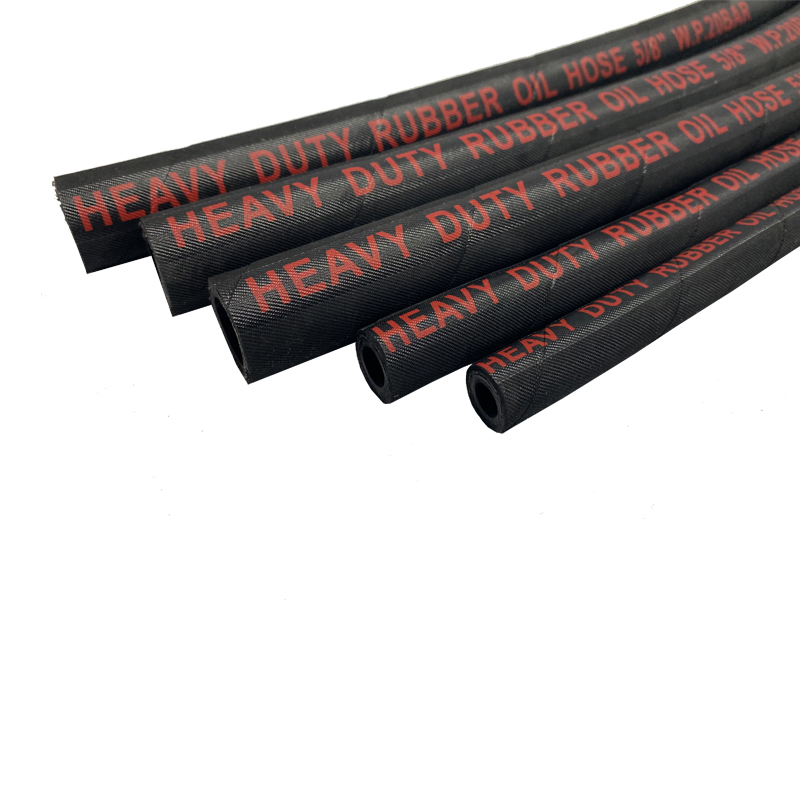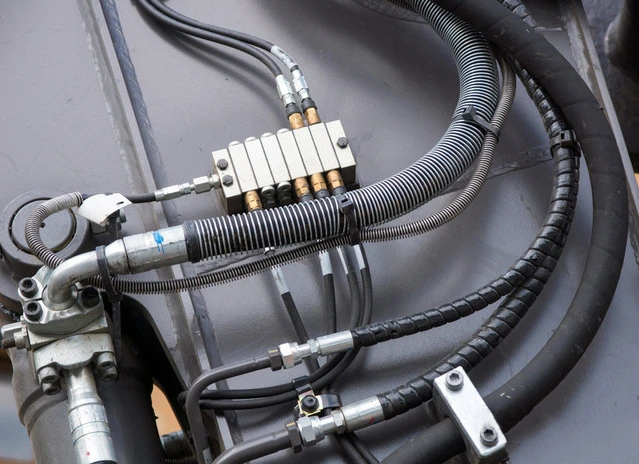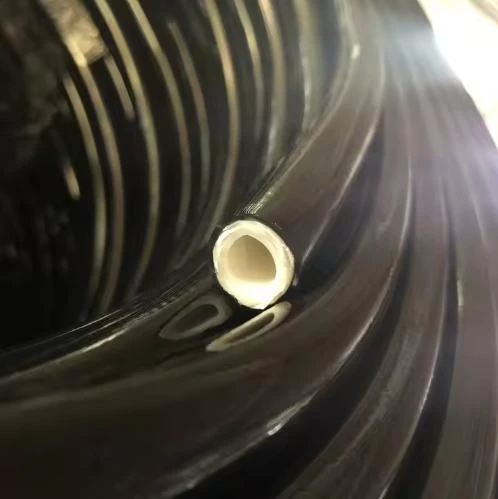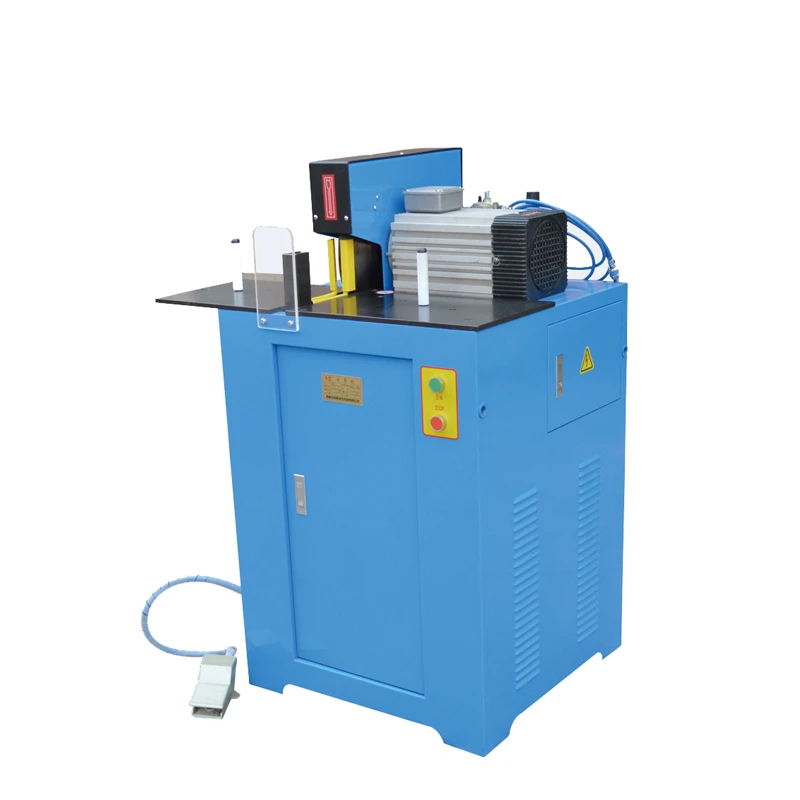オイルホース
オイルホースは、工業、自動車、農業システムにおいて、潤滑油、油圧作動油、燃料油などさまざまな種類のオイルを移送するために設計された特殊なフレキシブルチューブです。
耐油性のインナーチューブ、堅牢な補強材、耐久性のあるアウターカバーで作られたオイルホースは、柔軟性と長寿命を維持しながら高圧と過酷な条件に対応できるように設計されています。これらのホースは、油圧システム、エンジンの潤滑、燃料供給、機械や装置のオイル移送などの用途で広く使用されています。たとえば、油圧システムでは、オイルホースはコンポーネント間の油圧流体の安定した流れを確保し、スムーズな操作を促進します。自動車のエンジンでは、潤滑と冷却のためにモーターオイルを運びます。工業用途では、大量のオイルを貯蔵タンクから装置またはパイプラインに移送します。オイルホースは、トラクターやその他のオイル依存型機械に動力を供給するために農業でも不可欠です。信頼性の高い構造とさまざまなオイルタイプとの互換性により、複数の業界で効率的で安全な操作を維持するために不可欠です。
オイルホースに使用される主な材料は何ですか? また、それらはパフォーマンスにどのような影響を与えますか?
さまざまなオイル関連作業に不可欠なオイルホースは、通常、ニトリルゴム (NBR)、合成ゴム、熱可塑性樹脂、PVC などの材料で作られており、それぞれが特定の特性に基づいて選択され、さまざまな種類のオイルホースでオイルの移送を効果的に処理します。たとえば、オイルクーラーホースには、オイルを移送しながら熱を放散できる材料が必要になることがよくあります。優れた耐油性ホースを作ることで知られるニトリルゴムは、オイル、燃料、グリースに対する優れた耐性があるため広く使用されており、自動車や産業用途に最適です。
合成ゴムは、特に高圧環境で柔軟性と耐久性が向上し、劣化やひび割れにも強いため、圧力下でも完全性を維持する必要がある油圧ホースに最適です。熱可塑性材料は軽量構造で、摩耗や環境要因に強いため、ポータブルまたは屋外用途に適しています。
PVC は、その手頃な価格と汎用性から、汎用オイルホースによく使用されますが、極端な温度や圧力下では性能が劣る場合があります。オイルホースをそれほど要求の厳しくない環境で使用する必要がある場合、PVC はコスト効率の高いオプションになります。繊維編組、鋼線、またはスパイラル層などの補強材は、オイルホースの強度と圧力耐性を高めます。これは、特に油圧ホースに不可欠です。材料の選択は、ホースの柔軟性、温度範囲、およびさまざまなオイルタイプとの互換性に影響し、すべての特定の用途で最適なパフォーマンスと寿命を保証します。 工業用ホース.
長期的な信頼性と安全性を確保するためにオイルホースをどのようにメンテナンスしますか?
オイルホースのメンテナンスには、定期的な検査、適切な取り扱い、および故障を防止して耐用年数を延ばすための操作ガイドラインの順守が含まれます。ホースを定期的に点検し、亀裂、漏れ、膨れ、または摩耗などの摩耗の兆候がないか確認してください。特に継手や曲げ部の周囲はストレスがかかりやすいためです。システム障害や安全上の危険を回避するために、損傷したホースはすぐに交換してください。ホースを定期的に洗浄して、時間の経過とともに材質を劣化させる可能性のある油の残留物、汚れ、汚染物質を除去してください。適切な保管が不可欠です。ホースは、材質を弱める可能性のある直射日光、湿気、および刺激の強い化学物質から離れた、涼しく乾燥した換気の良い場所に保管してください。過負荷や早期摩耗を防ぐため、使用中にホースの指定された圧力、温度、および曲げ半径の制限を超えないようにしてください。継手がしっかりと取り付けられていることを確認し、漏れや接続の緩みがないか定期的に確認してください。これらのメンテナンス方法に従うことで、信頼性の高いパフォーマンスを確保し、安全性を高め、オイルホースの寿命を延ばすことができます。
Analysis of Core Materials and Oil-Resistant Mechanisms in Oil Hoses
SINOPULSE designs high-performance oil hoses with a deep understanding of material science and fluid dynamics. The selection and engineering of core materials play a pivotal role in ensuring hoses can withstand continuous exposure to various oils without degradation. Here’s an in-depth look at the key components and their oil-resistant mechanisms that make SINOPULSE hoses the preferred choice for oil suction, transfer, and delivery applications.
Nitrile Butadiene Rubber (NBR): The Backbone of Oil Resistance
At the heart of SINOPULSE oil-resistant hoses lies Nitrile Butadiene Rubber (NBR), a synthetic elastomer renowned for its exceptional oil compatibility. NBR’s molecular structure, characterized by acrylonitrile monomers, creates a cross-linked network that repels hydrocarbon-based oils. This unique composition minimizes oil absorption, ensuring the hose maintains its physical properties—such as flexibility, strength, and sealing integrity—even after prolonged immersion. For example, in diesel fuel or hydraulic oil applications, NBR-lined hoses exhibit a swelling rate of ≤5%, far surpassing the performance of standard rubber materials.
Reinforcement Layers: Enhancing Structural Integrity
To complement the oil-resistant inner tube, SINOPULSE integrates robust reinforcement layers. High-tensile steel wire braids or synthetic fiber meshes are woven around the NBR core, providing mechanical strength and pressure resistance. These layers distribute internal pressure evenly, enabling oil transfer hoses to handle working pressures up to 40 bar (580 PSI) and burst pressures exceeding 120 bar (1740 PSI). In heavy-duty scenarios like oil tank truck loading or industrial hydraulic systems, the reinforcement prevents tube collapse and leakage, ensuring safe and efficient oil delivery.
Outer Cover: Protection Against External Threats
The outer cover of SINOPULSE oil hoses is engineered to withstand harsh environments while safeguarding the inner components. Made from abrasion-resistant synthetic rubber or thermoplastic compounds, it resists cuts, punctures, and UV degradation—common hazards in outdoor oil transfer operations. Additionally, anti-static outer layers are available for applications involving flammable oils, dissipating electrical charges to prevent ignition risks.
Advanced Formulations for Specialized Oils
For applications requiring compatibility with synthetic lubricants, biofuels, or high-viscosity oils, SINOPULSE offers oil hoses with advanced material formulations. Fluoroelastomer (FKM) liners, for instance, provide superior resistance to aggressive chemicals and high temperatures, making them ideal for aerospace or automotive manufacturing. These specialized hoses undergo rigorous testing to ensure compliance with industry standards, such as ISO 18752 for fuel hose performance.
In industries where reliable oil transfer is non-negotiable, SINOPULSE’s commitment to material innovation and engineering excellence ensures that our oil hoses deliver long-lasting performance, safety, and efficiency.
Fault Warning and Emergency Handling of Oil Hoses
As a trusted oil hose manufacturer, SINOPULSE prioritizes safety and reliability in every oil hose we produce. However, even the most durable oil resistant hoses may encounter issues over time. Understanding how to detect early signs of failure and execute proper emergency protocols is crucial for preventing costly downtime and potential hazards in oil suction, transfer, and delivery operations.
Early Warning Signs of Hose Failure
SINOPULSE recommends regular visual inspections to identify impending issues. Bulges or Swelling indicate internal pressure damage or material degradation, often caused by excessive stress or incompatible oil types. Cracks or cuts in the outer cover expose the inner layers to environmental threats, increasing the risk of leakage. Discoloration or Hardening of the hose material signals chemical breakdown, particularly if the hose has been exposed to incompatible fluids. Additionally, unusual vibrations or whistling noises during operation may suggest blockages or pressure imbalances within the oil hose.
Emergency Response Protocols
In the event of a suspected hose failure, immediate action is essential. First, isolate the system: shut off the oil supply valves and depressurize the line to prevent further leakage. If the hose is used for flammable oils, evacuate the area and prohibit any ignition sources. For minor leaks, applying a specialized hose repair tape designed for oil-resistant materials can provide temporary containment, but this is only a stopgap measure. For significant damage, replace the hose with a SINOPULSE oil transfer hose of the same specification, ensuring proper fitting and alignment to avoid future issues.
Preventive Maintenance for Longevity
To minimize the risk of emergencies, follow SINOPULSE’s maintenance guidelines. Avoid exceeding the hose’s rated working pressure and temperature range, as overloading accelerates wear. When installing oil suction hoses, ensure the bend radius meets specifications to prevent kinking. Regularly clean and lubricate connectors to maintain a tight seal, and store hoses in a cool, dry environment away from direct sunlight to slow down material aging.
With SINOPULSE’s comprehensive approach to oil hose safety, operators can confidently manage potential risks and ensure continuous, secure oil transfer in any industrial setting.












